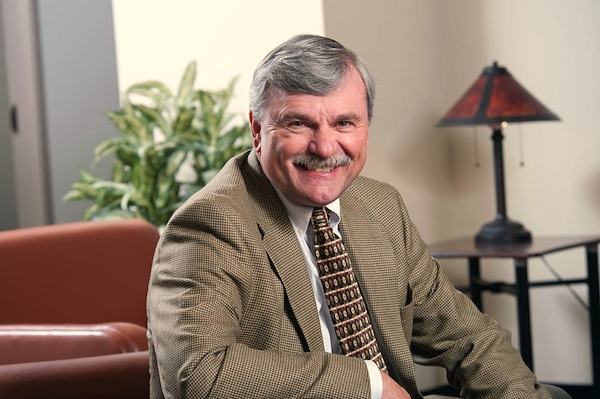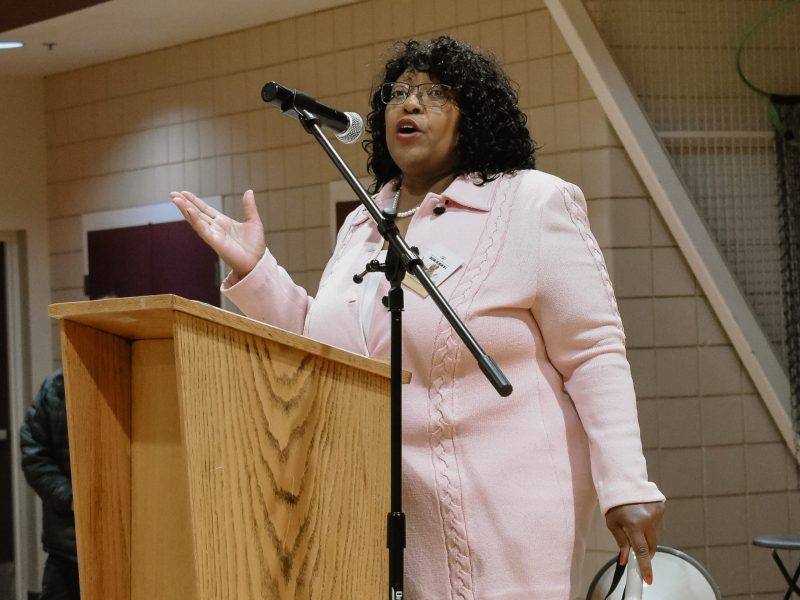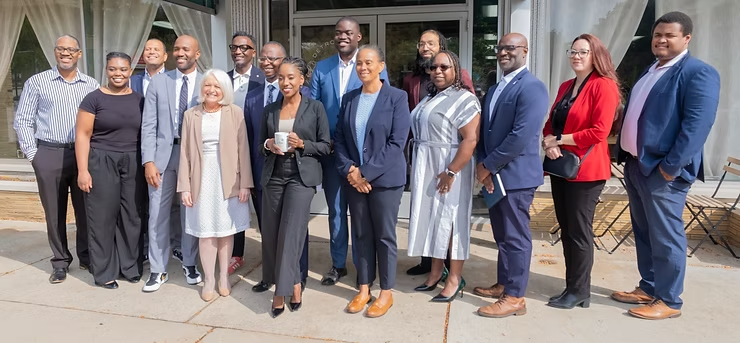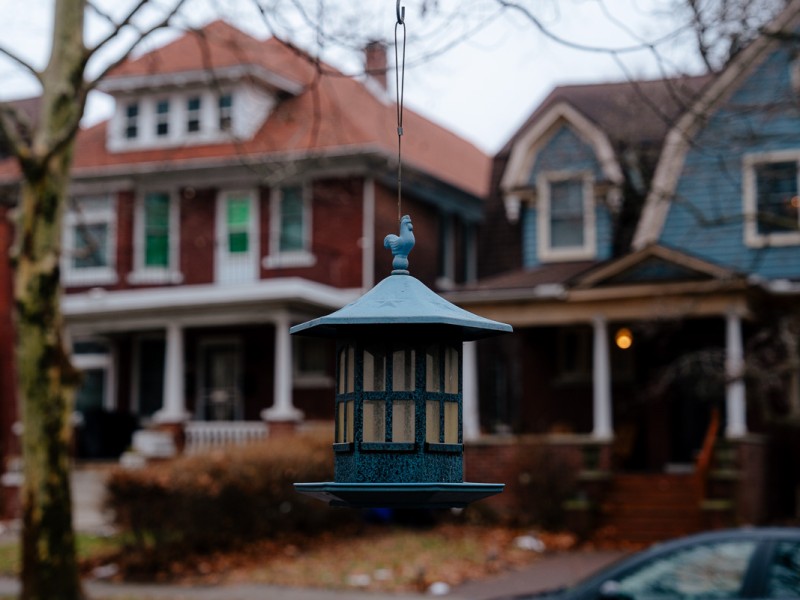The governor’s strategy man talks transit
William Rustem says everybody who believes in a better future for Michigan agrees that we’ve got to both take care of our roads and bridges as well as address public transit. We concur. Tom Clynes asks the questions.

William Rustem, director of strategy for Gov. Rick Snyder, says that nothing is more important to Michigan’s future than building transit and transportation systems that work. Rustem has a long history of public service, going back to 1976, when he coordinated the petition drive and campaign for the Michigan “bottle bill.” In 1984 he led the campaign for the constitutional amendment creating a Michigan Natural Resources Trust Fund. Rustem was Gov. William Milliken’s chief staff advisor on environmental matters and director of the Governor’s Policy Council. Rustem also served as program director for the People and Land Project, a grant-making program at the W. K. Kellogg Foundation.
How important are transportation and transit to state’s future prosperity?
Both are critical. You’ve got to move goods and services. And you’ve got to be able to move people to jobs. Younger people care less about cars than my generation did. This governor understands that if Michigan’s going to be successful, we’ve got to be successful at keeping our young people here. They want more transportation choices. They’re looking for different ways to move around.
The Detroit area is the largest metropolitan area in the continent that doesn’t have a regional transportation system. How did we get to this situation? And how do we get out of it?
The history of public transit in Southeast Michigan has just been fraught with politics. Historically, both an income and a racial divide in Southeast Michigan has existed for a long time. That’s one of the challenges. The other challenge is the fact that we have been a very much a home rule state, allowing local units of government to make independent decisions. Which means that sometimes it’s tough to look at things from a regional perspective in Michigan.
What we’re trying to do is basically start over. We’ve said look, we’re never going to get DDOT, Detroit Department of Transportation, and SMART, the suburban transportation system, to merge. It’s just not possible for a number of reasons. Politics among them, but also there are huge legacy costs. The city doesn’t want to pay the legacy costs for SMART and the suburbs don’t want to pay the legacy costs for DDOT. We’re going to start over, and build the spines on the routes that were important historically through Detroit. Again, those are Woodward, Gratiot, Michigan Avenue, and then across the top, across M-59 to connect the counties up there.
Have things changed to the point that the Detroit area is ready to get this done?
Slowly but surely we’re getting there. In Southeast Michigan, and in Detroit in particular, there is a buzz going on about some good things that are happening, particularly in downtown Detroit. We know we’ve got 98 percent occupancy in the Midtown townhouses that have been built recently. So there’s a greater demand. We’ve got to keep that buzz going and continue the momentum that has already started down there. That means we have to deal with this question of how do people get around. Because these are young people, and the availability of working mass transit is critical to them.
How can we get something running quickly enough to stop exodus of young talent from the state?
We’re trying. We’ve got a decent public transit system in the Grand Rapids area. In the Detroit area we’ve been unable to do it because of politics. Over the last 50 years there have been 23 attempts to create a regional transit system, and 23 attempts have failed. At this point we now have a package of four bills on the floor to create a Regional Transit Authority. We will dedicate bus rapid transit lanes on Woodward, Gratiot, Michigan, and M-59 across the top, and provide the assurance that stops can’t be wantonly prohibited by local municipal governments.
Do some municipalities prohibit bus stops?
Troy didn’t try to prohibit it, but were refusing to take federal money to create a transit stop in the city. They had voted to reject the federal dollars at one time, but the council finally went the other way after. There are still pockets where people don’t want a transit stop, despite the fact that all the data show that transit stops lead to significant economic development.
Will people finally be able to get from the airport to the city, as they can in other major cities around the world?
Actually that’s part of the plan. Detroit has the only airport in the world of its size that you can’t fly into and take mass transit someplace. A fifth spur to the airport is part of the plan. We’ll provide a bus, rolling rapid transit system from Detroit Metro Airport to downtown.
How do we sell people on the idea of transit?
The strategy is to make certain that we get everybody together. Everybody who believes in a different and a better future for Michigan is in accord saying we’ve got to both take care of our roads and bridges as well as public transit. We started very early on putting together a team of people. We made sure we had the business community represented by the Michigan Chamber of Commerce, that we had the environmental community represented by the Michigan Environmental Council, that we had municipalities represented by the Municipal League, and that we had the people who build roads and bridges and rails, the Michigan Infrastructure and Transportation Association.
They’re all in accord that Michigan must build an effective public transit system and also take care of our roads and bridges. It’s tough sledding getting everybody to agree locally in Southeast Michigan on every aspect of it, but we’re getting close. The bills have come out of committee and they’re now on the floor of the Senate, and we think we’re going to get them passed in the next several weeks.
Why should affluent suburbanites be committed to this?
There are 140,000 people that live in downtown Detroit and work in the suburbs. Without that workforce, the suburbs don’t work. There are slightly more suburbanites who work in downtown Detroit. People live regionally. People don’t live in isolation. It’s only the politicians that worry about giving up power to some kind of a regional entity. But at this point, we are getting much closer. We’ve got support from Oakland, Wayne, and Macomb Counties, from the city of Detroit, and from Washtenaw County. And local officials as well as the public are supporting this effort.
Should carmakers be threatened by mass transit?
Absolutely not. In fact, we’ve had conversations with the carmakers, and they clearly understand. What’s interesting is the carmakers themselves have begun to move away from being carmakers to being transportation providers. It’s a different world than it was 30 or 40 years ago. Their business model now includes all kinds of transportation, movement of people. They’ve become less car companies and more transportation companies. They’re clearly interested in this.
Where’s money going to come from?
There are three possible sources of revenue–federal funds and then either an increase in the registration fee or a property tax or a combination of the two.
The federal New Starts program provides up to 50 percent of the capital costs for building the system. The operating money is provided for in one of the four bills currently in the Senate. Once you create the authority, it will put on the ballot, for people to vote on, the funding source for operations. There are two options for funding it. One is through some kind of a special assessment or levy on property taxes. It’s the same way that both DDOT and SMART have been paid for. The second option is a new innovative option that the governor came up which provides for an optional increase in the automobile registration fee to be dedicated to public transit. Whatever the authority decides to put on the ballot that would be voted on by the people. We’re confident that if you put it on the ballot in the counties that have said that they want this system, you can win an election and get it funded.
What could derail it?
There are a million things that could derail it. There’s always a reason not to do something good. We’ve got to have enough support among the legislature to be able to do this; we need 56 votes in the House of Representatives and 20 votes in the Senate. If we can’t get that, then it’s derailed. So the key is for people who believe that this is important to let their elected representative and their elected senator know that it’s important for the region. It’s not just important for Detroit, not just important for the region, but important for Michigan. We’ve got to get votes from across the state to be able to get this done. Once the authority is created, there will be a public vote on whether to impose an increased registration fee or to dedicate a property tax millage to the support of the transit system. People need to be supportive at all of those steps.




